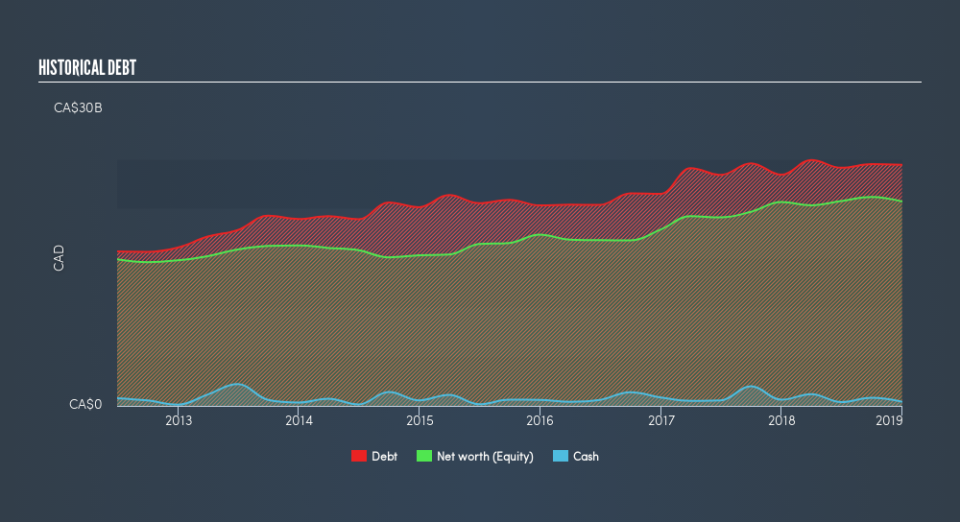What does BCE Inc.'s (TSE:BCE) Balance Sheet Tell Us About Its Future?

BCE Inc. (TSE:BCE), a large-cap worth CA$55b, comes to mind for investors seeking a strong and reliable stock investment. Doing business globally, large caps tend to have diversified revenue streams and attractive capital returns, making them desirable investments for risk-averse portfolios. However, the key to extending previous success is in the health of the company’s financials. Let’s take a look at BCE’s leverage and assess its financial strength to get an idea of their ability to fund strategic acquisitions and grow through cyclical pressures. Note that this information is centred entirely on financial health and is a high-level overview, so I encourage you to look further into BCE here.
View our latest analysis for BCE
BCE’s Debt (And Cash Flows)
Over the past year, BCE has maintained its debt levels at around CA$24b which accounts for long term debt. At this constant level of debt, the current cash and short-term investment levels stands at CA$425m , ready to be used for running the business. On top of this, BCE has produced cash from operations of CA$7.4b over the same time period, resulting in an operating cash to total debt ratio of 30%, meaning that BCE’s operating cash is sufficient to cover its debt.
Does BCE’s liquid assets cover its short-term commitments?
With current liabilities at CA$10b, it appears that the company may not have an easy time meeting these commitments with a current assets level of CA$5.8b, leading to a current ratio of 0.56x. The current ratio is the number you get when you divide current assets by current liabilities.
Can BCE service its debt comfortably?
BCE is a highly levered company given that total debt exceeds equity. This isn’t surprising for large-caps, as equity can often be more expensive to issue than debt, plus interest payments are tax deductible. Accordingly, large companies often have lower cost of capital due to easily obtained financing, providing an advantage over smaller companies. No matter how high the company’s debt, if it can easily cover the interest payments, it’s considered to be efficient with its use of excess leverage. Preferably, earnings before interest and tax (EBIT) should be at least three times as large as net interest. For BCE, the ratio of 5.45x suggests that interest is appropriately covered. It is considered a responsible and reassuring practice to maintain high interest coverage, which makes BCE and other large-cap investments thought to be safe.
Next Steps:
BCE’s high cash coverage means that, although its debt levels are high, the company is able to utilise its borrowings efficiently in order to generate cash flow. But, its low liquidity raises concerns over whether current asset management practices are properly implemented for the large-cap. This is only a rough assessment of financial health, and I'm sure BCE has company-specific issues impacting its capital structure decisions. You should continue to research BCE to get a better picture of the stock by looking at:
Future Outlook: What are well-informed industry analysts predicting for BCE’s future growth? Take a look at our free research report of analyst consensus for BCE’s outlook.
Valuation: What is BCE worth today? Is the stock undervalued, even when its growth outlook is factored into its intrinsic value? The intrinsic value infographic in our free research report helps visualize whether BCE is currently mispriced by the market.
Other High-Performing Stocks: Are there other stocks that provide better prospects with proven track records? Explore our free list of these great stocks here.
We aim to bring you long-term focused research analysis driven by fundamental data. Note that our analysis may not factor in the latest price-sensitive company announcements or qualitative material.
If you spot an error that warrants correction, please contact the editor at editorial-team@simplywallst.com. This article by Simply Wall St is general in nature. It does not constitute a recommendation to buy or sell any stock, and does not take account of your objectives, or your financial situation. Simply Wall St has no position in the stocks mentioned. Thank you for reading.


